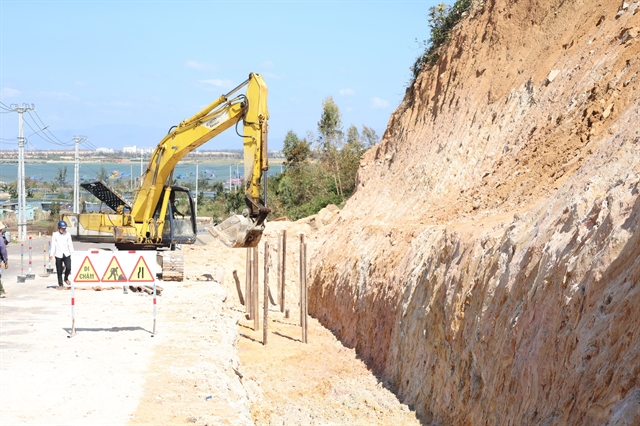 Society
Society

It is necessary to address health financing issues and strengthen health systems against the growing multidrug-resistant tuberculosis (MDR TB) epidemic, which has become a growing global concern, according to Việt Nam’s Ministry of Health.
 |
| The APEC Policy Dialogue on “Accelerating action on TB and MDR-TB in the APEC Region,” takes a concerned look at multidrug-resistant TB in member economies in HCM City on August 22. —VNS.Photo Gia Lộc |
HCM CITY – It is necessary to address health financing issues and strengthen health systems against the growing multidrug-resistant tuberculosis (MDR TB) epidemic, which has become a growing global concern, according to Việt Nam’s Ministry of Health.
Opening the Policy Dialogue on “Accelerating action on TB and MDR-TB in the APEC Region” on Tuesday, Deputy Minister of Health Phạm Lê Tuấn said the significant healthcare costs for MDR TB treatment have had a serious economic impact on APEC members.
“The health sector cannot address these issues and move forward to ending TB by itself, and require the involvement of the entire political system and multi-sectoral cooperation.”
This dialogue is an initiative by Việt Nam in collaboration with APEC members with support from the World Health Organization (WHO).
“We can reach a consensus on the severity of the TB epidemic and come up with a new breakthrough strategy … for TB control and a multi-sectoral accountability framework to end TB in the APEC region,” Tuấn said.
In past decades Việt Nam was a high achiever, being one of nine economies to achieve the three Millennium Development Goals’indicators on TB epidemic reduction, one of the three leading economies in the implementation of WHO’s End TB Study, and a pioneer in the implementation of WHO’s End TB Strategy.
But it still ranks 15th among 30 countries and territories in terms of the highest burden from TB and MDR-TB.
The number of deaths from TB remains high in the country, mostly of people who have not been diagnosed and treated.
“Our top priority now is to detect all TB patients as soon as possible and cure them to reduce the sources of infection in the community,” Tuấn said.
MDR-TB faces major obstacles like long treatment time, co-morbidities, community discrimination, limitation of current diagnostic techniques, vaccines, and anti-TB drugs, requiring significant human, material and financial investment, he added.
Assoc Prof Nguyễn Viết Nhung, director of the National Lung Hospital and Manager of the National Tuberculosis Control Programme, told Việt Nam News on the sidelines of the event that primary healthcare services at grassroots level in the country should be improved to provide access for people.
Moreover, it is very important to help people understand and visit health facilities for screening for TB if authorities want to increase the TB detection and treatment rate, according to Nhung.
The number of people with TB not detected and treated in the community is still “high” because grassroots health services are insufficient and local authorities in several localities have not paid attention to the disease.
This is a challenge because they are the main transmitters and the barriers preventing the country from reaching the targets of reducing new cases by 30 per cent and fatalities due to TB by 40 per cent in 2020 compared to 2015.
The country’s current TB prevalence rate is 131 per 100,000 population.
There are an estimated 128,000 new infections every year, but only 100,000 are detected.
Tuấn said TB mostly affected the poor and thus the majority of them faced catastrophic costs.
“Supportive policies for TB patients are also very important.”
The availability of standard TB services along with universal health coverage would hold the key to ending TB, he said. —VNS




